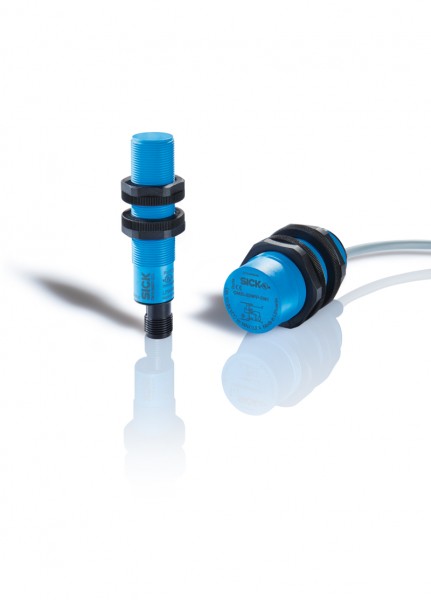SICK’s new capacitive proximity sensors feature improved electromagnetic compatibility in extreme environments

SICK’s CM18 & CM30 capacitive proximity sensors – reliable detection through excellent electromagnetic compatibility
Photo by Sick AG
SICK takes its CM18 and CM30 capacitive proximity sensors to the next level. The new generation, which is extremely rugged, benefits from improved electromagnetic compatibility even in critical applications. A further new development comes in the form of enclosure rating IP 69K, which allows the sensors to withstand even high-pressure cleaning techniques.
With a temperature range from -30 °C to +85 °C, the sensors can even withstand extreme variations in temperature. Their resistant housing, which is certified by Ecolab, allows them to be used in hygienic and washdown zones. And that’s not all: The sensing range has increased, dust and moisture compensation has improved, and an additional LED has been added to display signal stability.
CM capacitive proximity sensors
Capacitive proximity sensors can detect all powdery, granulated, liquid, and solid materials – even through plastic or glass walls. The sensors are compatible for use in many industrial applications including, for example, in the solar and electronics industry for the detection of solar wafers; in the packaging industry for the detection of aluminum, cardboard, and paper; in the plastics industry for the detection of different media; on woodworking machines as well as in the pharmaceutical and chemical industry for the detection of various liquids.
Tried-and-tested sensors for object detection and level measurement
The CM product family with metric housing offers extremely high electromagnetic compatibility (EMC), which prevents switching errors. Sensitivity adjustment can be performed quickly and easily using a potentiometer or teach-in button, saving valuable time during commissioning. If the sensors are installed in inaccessible locations, they can be equipped with an external, cabled teach-in button. CM proximity sensors are also characterized by high shock and vibration resistance as well as low sensitivity to dust and dampness. Together with the optical adjustment indicator, these features can be relied upon to deliver safe detection of objects and, as a result, less machine downtime.
For more information, please visit http://www.sick.com.
News Categories
- » NEWS HOME
- » Automation & Robotics
- » Industry 4.0
- » Material Handling
- » Sensors
- » Quality & Testing
- » Machine Vision
- » Laser & Optics
- » Metalworking
- » Motion Control & Drives
- » Hydraulics & Pneumatics
- » Process Industry
- » Renewable Energy
- » Agriculture
- » Home & Office Furniture
- » Environmental Tech

